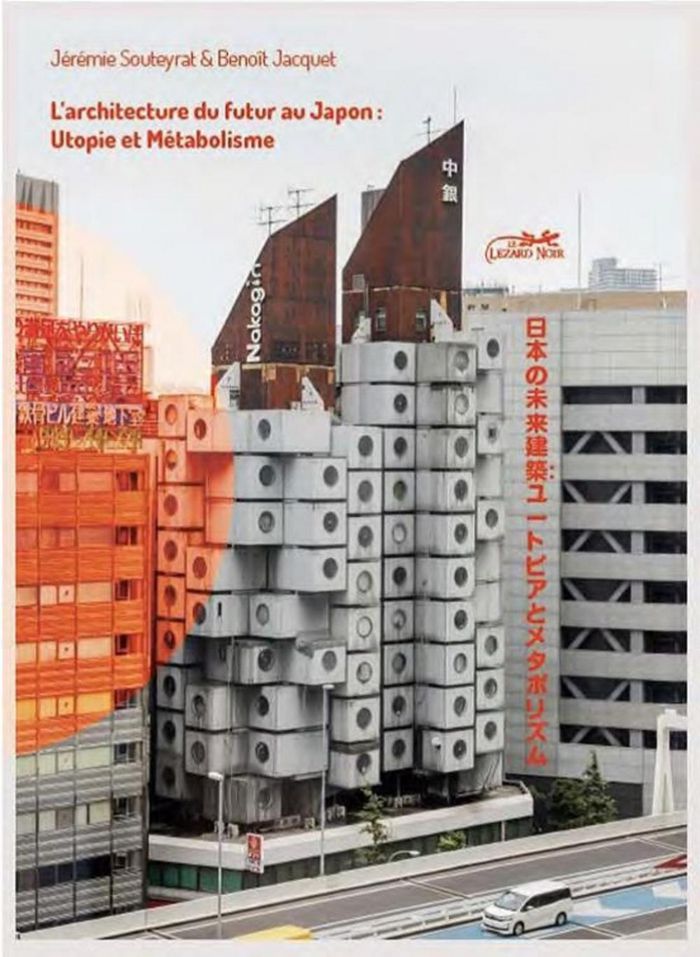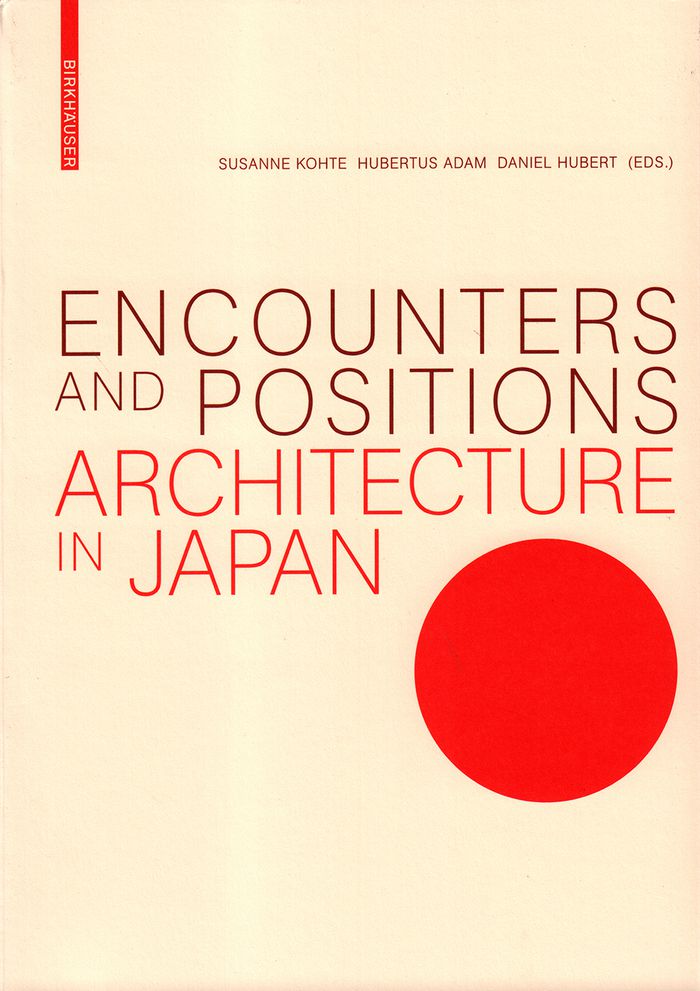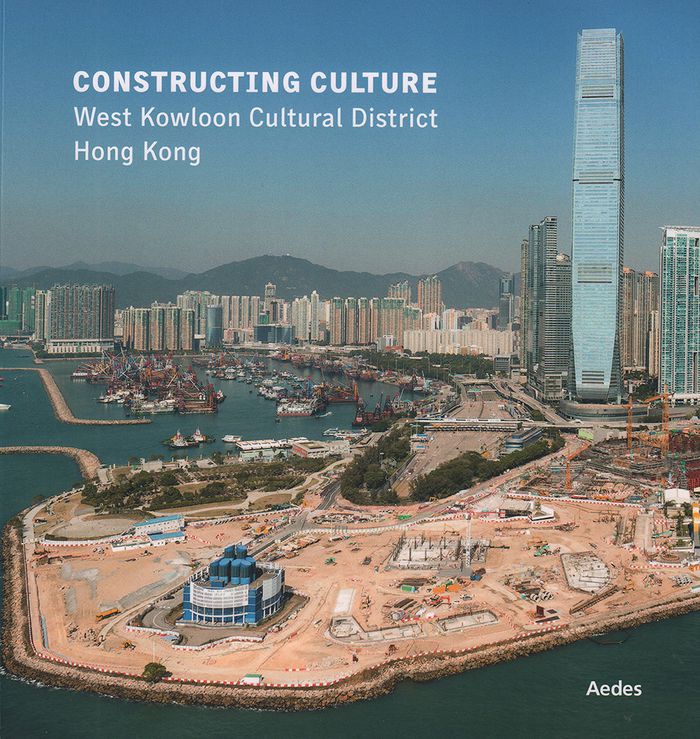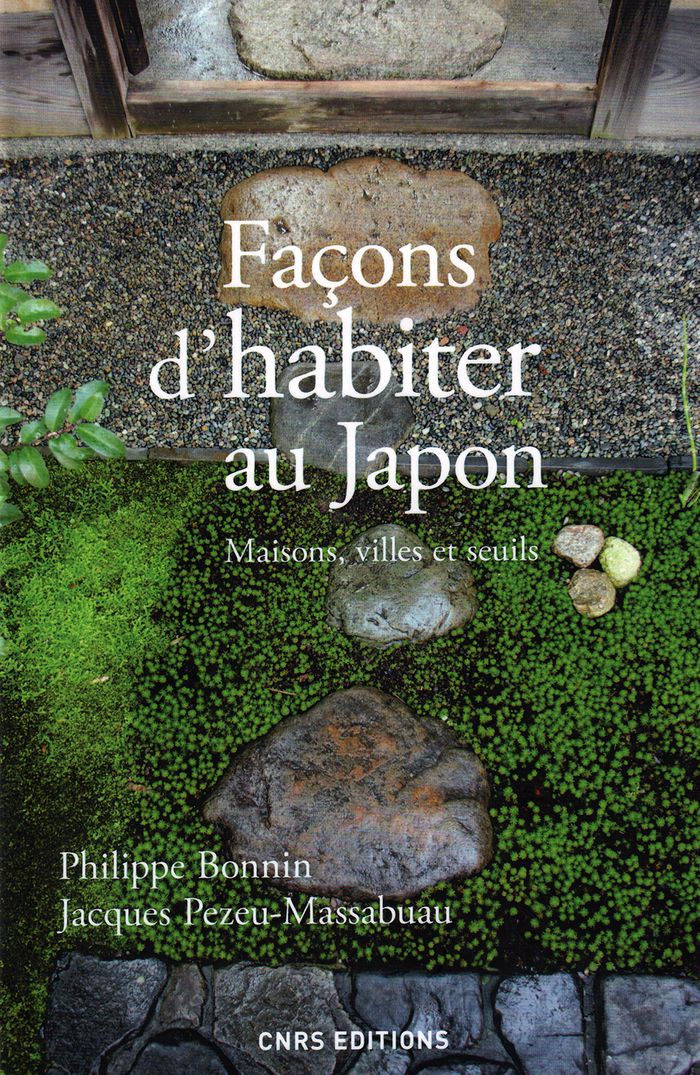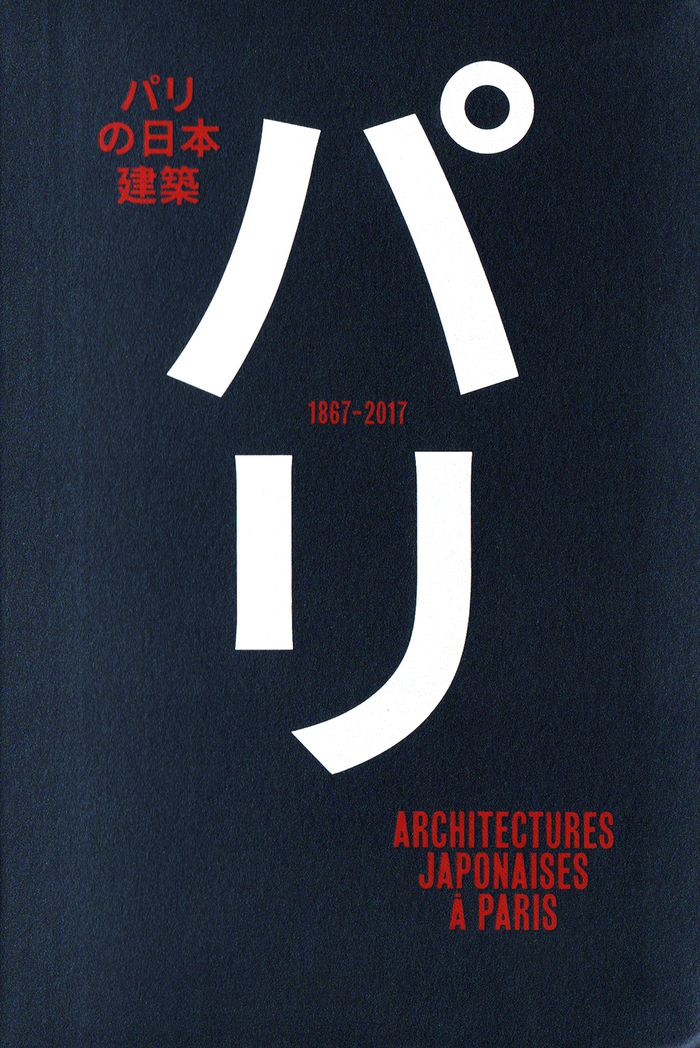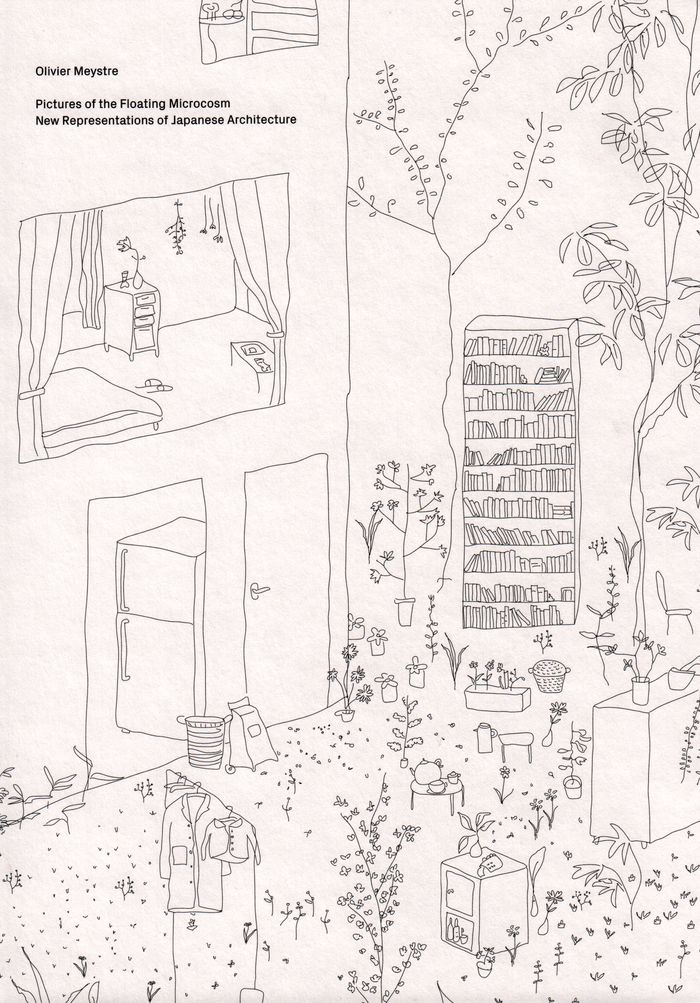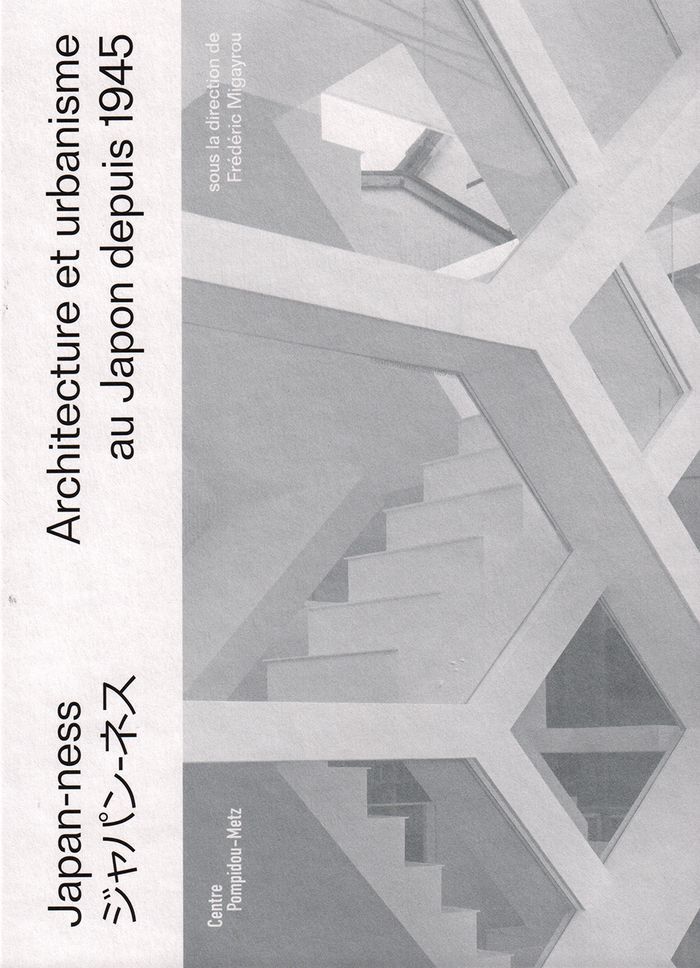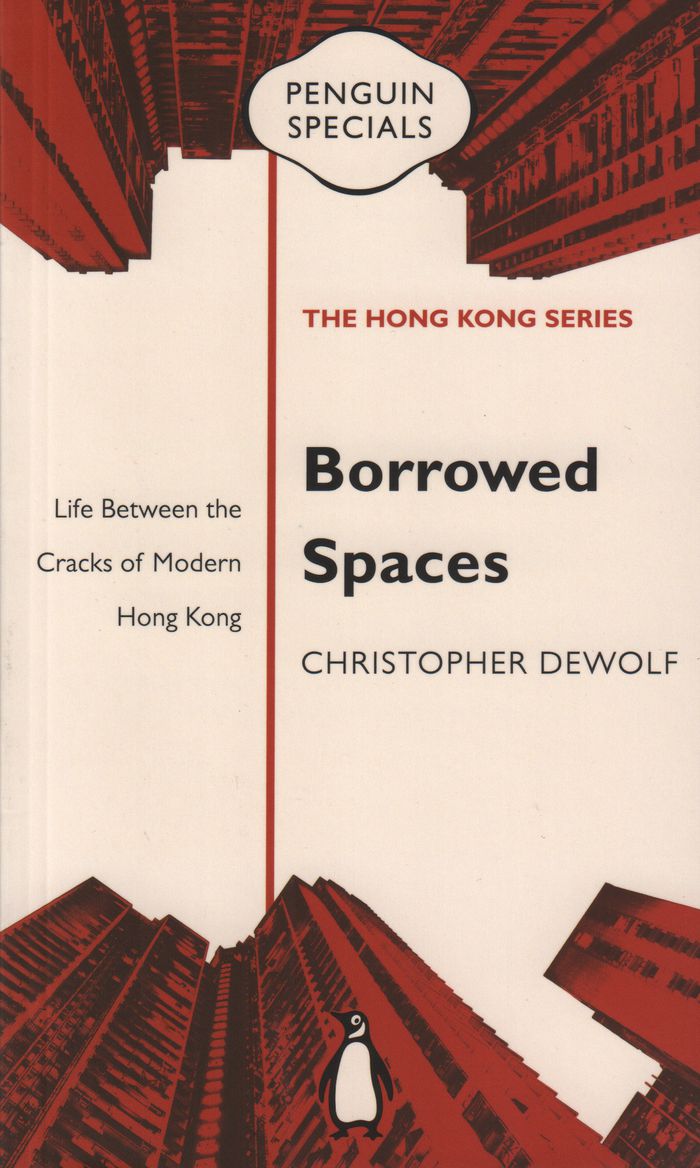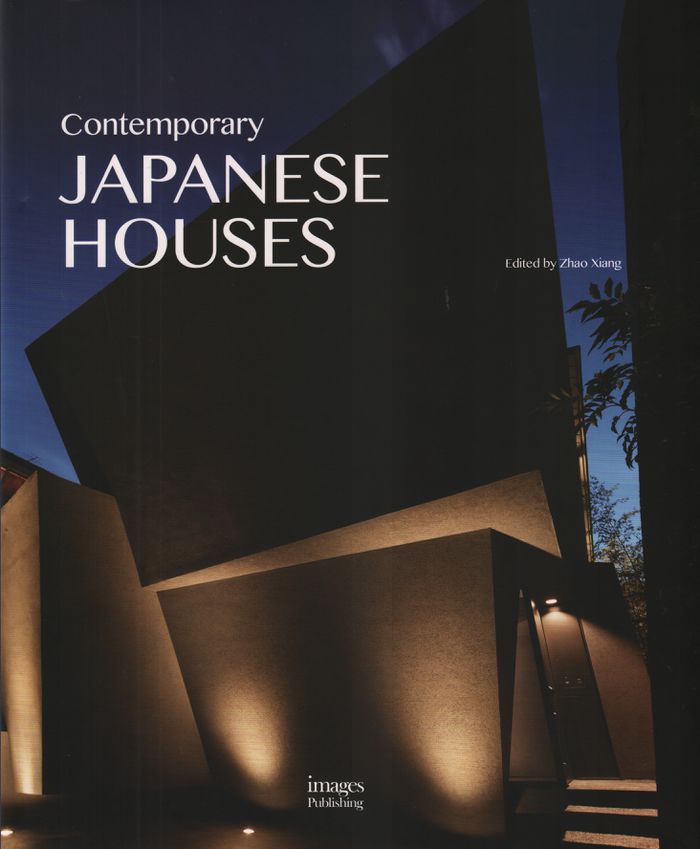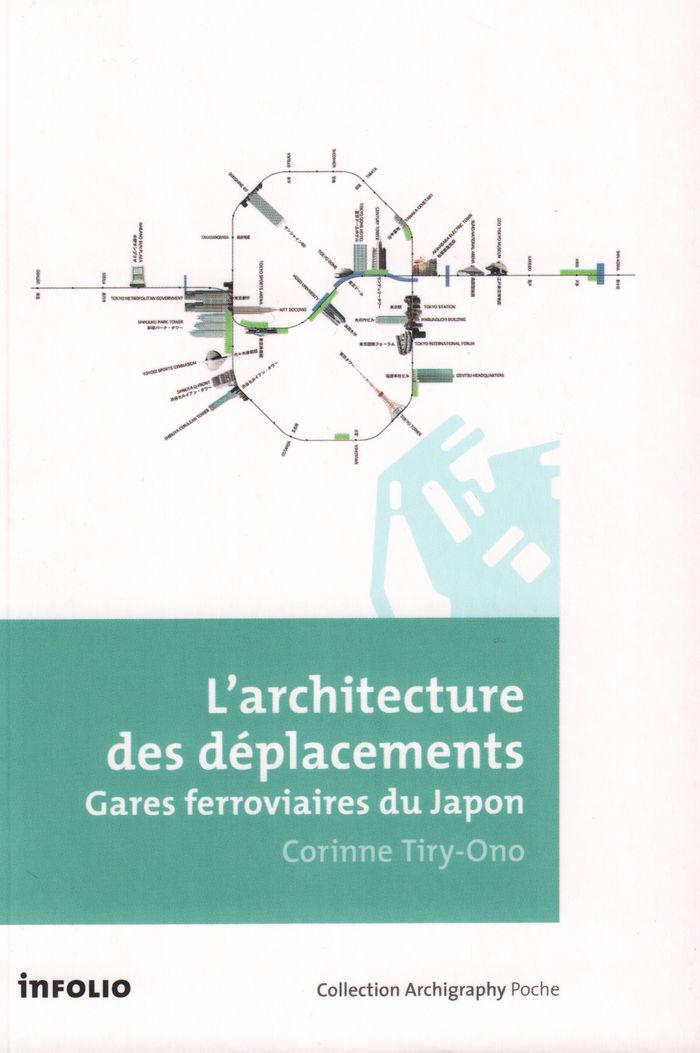$79.95
(available to order)
Summary:
À partir de la fin des années 1950, le Japon, largement détruit pendant la Seconde Guerre mondiale, entame un cycle de haute croissance économique. Pendant une dizaine année, jusqu’au choc pétrolier de 1973, une nouvelle génération d’architectes va développer des projets utopiques et visionnaires dont les enjeux sont de contrôler et de développer la croissance urbaine.(...)
Contemporary Asian Architecture
March 2021
L'architecture du futur au Japon : Utopie et métabolisme
Actions:
Price:
$79.95
(available to order)
Summary:
À partir de la fin des années 1950, le Japon, largement détruit pendant la Seconde Guerre mondiale, entame un cycle de haute croissance économique. Pendant une dizaine année, jusqu’au choc pétrolier de 1973, une nouvelle génération d’architectes va développer des projets utopiques et visionnaires dont les enjeux sont de contrôler et de développer la croissance urbaine. Cet ouvrage propose plusieurs projets et réalisations datant des années 1960 et 1970, photographiés en 2017 par Jérémie Souteyrat.
Contemporary Asian Architecture
$79.95
(available to order)
Summary:
Now as before, Japanese architecture is very popular in Europe and the western world. This publication provides an overview of its many design concepts and cross-references. Using design examples and interviews, the book presents thirteen current positions.The publication focuses on young architects who take up extremely independent positions within Japanese architecture,(...)
Contemporary Asian Architecture
March 2017
Encounters and positions: architecture in Japan
Actions:
Price:
$79.95
(available to order)
Summary:
Now as before, Japanese architecture is very popular in Europe and the western world. This publication provides an overview of its many design concepts and cross-references. Using design examples and interviews, the book presents thirteen current positions.The publication focuses on young architects who take up extremely independent positions within Japanese architecture, as well as on Pritzker Prize winners Toyo Ito and Fumihiko Maki. Six essays by European specialists on Japan provide supplementary insights into the aesthetics and space concepts of Japanese architecture, making cross-references to Japan’s architectural history, and explaining current lines of development. The book thus combines a self-reflective approach with an outsider’s analytical view.
Contemporary Asian Architecture
$21.95
(available to order)
Summary:
The West Kowloon Cultural District in Hong Kong is one of the world’s largest and most ambitious cultural projects. Currently under construction, it will establish a dynamic cultural quarter on 40 hectares of reclaimed land located on Hong Kong’s iconic Victoria Harbour. With 23 hectares of public open space comprised of the Art Park, two kilometres of waterfront(...)
Constructing culture: West Kowloon cultural district, Hong Kong
Actions:
Price:
$21.95
(available to order)
Summary:
The West Kowloon Cultural District in Hong Kong is one of the world’s largest and most ambitious cultural projects. Currently under construction, it will establish a dynamic cultural quarter on 40 hectares of reclaimed land located on Hong Kong’s iconic Victoria Harbour. With 23 hectares of public open space comprised of the Art Park, two kilometres of waterfront promenade, squares, plazas and terraces, the district also aims to be an open and accessible recreation destination for locals and international visitors alike. Featuring buildings by leading international architects, including the M+ Museum by Herzog & de Meuron, the Xiqu Centre / Opera House by Bing Thom Architects, the Lyric Theatre by UNStudio and the Palace Museum by Rocco Design Architects, the district will deliver landmark architecture within a clearly defined cultural precinct where traffic is taken below ground and walking and cycling are encouraged at street level.
Contemporary Asian Architecture
$56.95
(available to order)
Summary:
Les études réunies ici témoignent d'une commune passion pour la maison – traditionnelle ou très contemporaine –, la ville et l'espace japonais, visités par la plume des deux auteurs. Ils sont pour l'un géographe – Jacques Pezeu-Massabuau –, pour l'autre architecte et anthropologue – Philippe Bonnin. Chacun, de son côté, a poursuivi un travail obstiné d'observation, de(...)
Contemporary Asian Architecture
August 2017
Façons d'habiter au Japon - Maisons, villes et seuils
Actions:
Price:
$56.95
(available to order)
Summary:
Les études réunies ici témoignent d'une commune passion pour la maison – traditionnelle ou très contemporaine –, la ville et l'espace japonais, visités par la plume des deux auteurs. Ils sont pour l'un géographe – Jacques Pezeu-Massabuau –, pour l'autre architecte et anthropologue – Philippe Bonnin. Chacun, de son côté, a poursuivi un travail obstiné d'observation, de description, de dévoilement, d'analyse approfondie de la réalité de cette habitation japonaise, de son esthétique, des gestes, des paroles qui l'entourent. Réunir ces textes devenait un impératif pour confronter leurs approches complémentaires et décoder cette culture japonaise si passionnante.
Contemporary Asian Architecture
$61.95
(available to order)
Summary:
Les architectes japonais écrivent avec Paris une histoire singulière et méconnue, un patrimoine matériel et immatériel divers, poétique et innovant, qui rend hommage à la ville et en subvertit les codes. Cet ouvrage révèle les échanges intenses entre deux cultures, nés à la fin du XIXe siècle et incarnés, à l’heure de l’apprentissage de la modernité, par la venue de Kunio(...)
Architectures japonaises à Paris, 1867-2017
Actions:
Price:
$61.95
(available to order)
Summary:
Les architectes japonais écrivent avec Paris une histoire singulière et méconnue, un patrimoine matériel et immatériel divers, poétique et innovant, qui rend hommage à la ville et en subvertit les codes. Cet ouvrage révèle les échanges intenses entre deux cultures, nés à la fin du XIXe siècle et incarnés, à l’heure de l’apprentissage de la modernité, par la venue de Kunio Maekawa et Junzo Sakakura auprès de Le Corbusier.
Contemporary Asian Architecture
$54.95
(available to order)
Summary:
The success of any architectural project depends on the architect’s ability to depict it. Conveying architectural ideas as drawings, pictures, or models is both a critical part of the process and one that can tell us much about the design itself in a particular time or place. Over the past two decades, major new trends in architectural representation have emerged in(...)
Pictures of the floating microcosm: new representations of Japanese architecture
Actions:
Price:
$54.95
(available to order)
Summary:
The success of any architectural project depends on the architect’s ability to depict it. Conveying architectural ideas as drawings, pictures, or models is both a critical part of the process and one that can tell us much about the design itself in a particular time or place. Over the past two decades, major new trends in architectural representation have emerged in Japan, which have gained widespread attention in the western world. "Pictures of the floating microcosm" considers these trends and takes readers through their development to the present day. Olivier Meystre undertakes a critique of the design tools and mediation techniques that have been employed and reveals the very special ways of conceiving an architectural project, drawing on a wealth of new research and interviews with contemporary Japanese architects.
Contemporary Asian Architecture
$74.95
(available to order)
Summary:
Présentation de l'histoire de l'architecture japonaise depuis les destructions d'Hiroshima et Nagasaki par la bombe atomique en 1945 s'attardant sur les mutations des grandes villes japonaises à travers les enjeux urbains. Avec un point sur les réalisations de grands architectes comme Tadao Ando, Kenzo Tange et Kengo Kuma ainsi que sur les mouvements et les écoles.
Japan-ness : architecture et urbanisme au Japon depuis 1945
Actions:
Price:
$74.95
(available to order)
Summary:
Présentation de l'histoire de l'architecture japonaise depuis les destructions d'Hiroshima et Nagasaki par la bombe atomique en 1945 s'attardant sur les mutations des grandes villes japonaises à travers les enjeux urbains. Avec un point sur les réalisations de grands architectes comme Tadao Ando, Kenzo Tange et Kengo Kuma ainsi que sur les mouvements et les écoles.
Contemporary Asian Architecture
$12.95
(available to order)
Summary:
Where have all the fishballs gone? From a journalist deeply attuned to the subtleties of Hong Kong life comes "Borrowed Spaces", a chronicle of the ways in which the grassroots citizens of Hong Kong reshape their city to make up for the shortcomings of their bureaucratic government. Mango trees sprouting on roundabouts, fishball stalls and neon signs: these are just some(...)
Borrowed spaces: life between the cracks of modern kong Kong
Actions:
Price:
$12.95
(available to order)
Summary:
Where have all the fishballs gone? From a journalist deeply attuned to the subtleties of Hong Kong life comes "Borrowed Spaces", a chronicle of the ways in which the grassroots citizens of Hong Kong reshape their city to make up for the shortcomings of their bureaucratic government. Mango trees sprouting on roundabouts, fishball stalls and neon signs: these are just some of the Hong Kong icons that are casualties in the struggle to reclaim public spaces. Christopher DeWolf explores the history of Hong Kong’s urban growth through the daily tug of war between the people’s needs to express themselves and government regulations.
Contemporary Asian Architecture
Contemporary Japanese houses
$67.50
(available to order)
Summary:
Professor Zhao Xiang, from Fukuoka University, provides indepth analyses of the historical influences of a dozen different design themes that have played a vital role in Japanese professional practice across the last six decades, such as the stereoscopic detached living mode; the new parameters for personal and traditional 'space'; the spatial responses to a modern family(...)
Contemporary Japanese houses
Actions:
Price:
$67.50
(available to order)
Summary:
Professor Zhao Xiang, from Fukuoka University, provides indepth analyses of the historical influences of a dozen different design themes that have played a vital role in Japanese professional practice across the last six decades, such as the stereoscopic detached living mode; the new parameters for personal and traditional 'space'; the spatial responses to a modern family concept; the use of 'abstract space'; and even urban guerilla housing. There are also more than 40 case studies, illustrated throughout, that serve as the strongest reflection of the rich diversity of modern houses currently trending across Japan today.
Contemporary Asian Architecture
$29.95
(available to order)
Summary:
Au Japon, la grande gare ferroviaire cristallise de multiples enjeux de la fabrique et du renouvellement des métropoles. Cet ouvrage se concentre sur la généalogie de cet équipement, du point de vue de ses mutations architecturales et urbaines dans le contexte d’une modernité désirée ou éprouvée. À l’appui de nombreux exemples illustrés, il vise à donner des clés de(...)
L'architecture des déplacements : gares ferroviaires du Japon
Actions:
Price:
$29.95
(available to order)
Summary:
Au Japon, la grande gare ferroviaire cristallise de multiples enjeux de la fabrique et du renouvellement des métropoles. Cet ouvrage se concentre sur la généalogie de cet équipement, du point de vue de ses mutations architecturales et urbaines dans le contexte d’une modernité désirée ou éprouvée. À l’appui de nombreux exemples illustrés, il vise à donner des clés de compréhension d’une forme de centralité singulière, qui allie activité et mouvement et constitue un repère structurant du paysage urbain nippon. L’originalité de ce modèle provient de la persistance, réelle ou mentale, de schémas traditionnels de pensée et pratique de la ville, au sein d’un processus de réinvention et de reconstruction permanent. Matérialisation spatiale du thème de la connexion, la grande gare japonaise marque aussi réflexions et opérations à grande échelle. La relecture d’un ensemble de projets d’architectes japonais pour Tokyo, laboratoire des années de forte croissance, décrypte cette même approche conjuguée de l’architecture des déplacements.
Contemporary Asian Architecture
